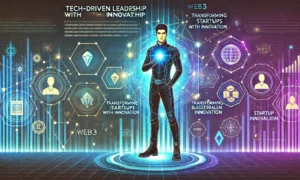Background:
The Indian Space Research Organisation (ISRO) is on the cusp of achieving a historic milestone with its 100th rocket launch scheduled for January 2025. This significant event will be marked by a GSLV mission, following the successful PSLVC60 mission, which served as ISRO’s 99th launch. The milestone highlights India’s growing prowess in space exploration and technological advancement.
Key Developments:
GSLV Mission:
The 100th Launch: ISRO’s upcoming GSLV (Geosynchronous Satellite Launch Vehicle) mission is set to be the 100th launch in the organization’s space exploration journey. This mission will showcase ISRO’s capability in launching heavier payloads into higher orbits.
GSLV’s Role: The GSLV series is crucial for ISRO’s ambitions, enabling the launch of communication satellites and providing the infrastructure to enhance India’s satellite capabilities.
PSLVC60 Mission – The 99th Launch:
Success: The PSLVC60 mission, which successfully launched earlier, marked the 99th mission in ISRO’s space exploration calendar. It showcased ISRO’s continued success in deploying satellites into orbit and demonstrated the reliability of the Polar Satellite Launch Vehicle (PSLV), often regarded as the workhorse of ISRO.
Versatility of PSLV: The PSLV has been instrumental in placing satellites in low Earth orbit (LEO) and sun-synchronous orbits, further cementing ISRO’s reputation in both commercial and scientific satellite launches.
Technological Milestones:
Space Docking Technology: ISRO is making strides in developing advanced space docking technology, which will allow spacecraft to autonomously dock and undock in orbit. This technology is crucial for future space missions, including manned missions and deep-space exploration.
NavIC Satellite Constellation: ISRO continues to work on NavIC, India’s own regional satellite navigation system, which provides precise positioning information to users within the region. The completion and enhancement of this constellation will strengthen India’s autonomous navigation capabilities and reduce dependency on foreign systems like GPS.
Implications for India’s Space Program:
Space Exploration Leadership:
Regional Leadership: With the 100th launch, ISRO solidifies its role as a leader in space exploration within Asia and as a growing force in the global space community. The organization has garnered international acclaim for its cost-effective, efficient space missions.
Global Competitiveness: The advancements in GSLV missions and space docking will position ISRO to compete with global space agencies, including NASA, ESA, and China’s CNSA, especially in terms of satellite launches and deep-space missions.
Scientific Advancements:
Increased Research Opportunities: The continuous development of technologies such as space docking and the NavIC system will open doors to more ambitious space missions, including interplanetary exploration and satellite-based research.
Commercial Space Growth: ISRO’s success in launching satellites for commercial purposes has attracted global clients, contributing to the growth of India’s space economy. The 100th launch and the subsequent advancements are expected to fuel more commercial collaborations and satellite services.
Technological and Economic Development:
Spin-off Technologies: Innovations in space technologies often have downstream applications in other industries, including telecommunications, weather forecasting, and national security.
Job Creation: With increased space activities, ISRO’s success will contribute to employment generation in the technology and engineering sectors, boosting the nation’s economy.
Challenges and Opportunities:
Challenges:
Space Debris Management: As ISRO continues to increase the number of satellites launched, managing space debris becomes a critical concern. The organization needs to implement strategies for minimizing debris and ensuring the sustainability of space operations.
Funding and Resources: While ISRO has been remarkably cost-effective, continued advancements in space exploration will require sustained investment in research, infrastructure, and human capital.
Opportunities:
International Collaborations: With the growing success of its missions, ISRO has the opportunity to collaborate with other space agencies for joint missions, such as the proposed Lunar and Mars missions.
Manned Missions: The development of space docking technology is a step forward for ISRO’s ambitions in sending humans to space, with future plans for crewed space exploration in the works, potentially targeting the Gaganyaan mission.
Conclusion:
ISRO’s 100th rocket launch in January 2025 will mark a significant milestone in India’s space journey, reinforcing the country’s technological advancements and expanding influence in the global space arena. The successful PSLVC60 mission, along with ISRO’s focus on key technologies like space docking and NavIC, underscores the agency’s commitment to pioneering in space exploration. As ISRO aims for even more ambitious goals, the milestone serves as a testament to its relentless pursuit of excellence and innovation in space science and technology


